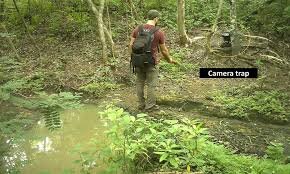
Conservationists Examine What Camera Traps Miss in Costa Rica’s Jaguar Research
Researchers reveal that automated cameras often overlook key aspects of jaguar behavior and habitat use.
In Costa Rica, wildlife researchers are reassessing the limitations of camera traps in studying jaguars, one of Central America’s most elusive predators.
While these automated cameras have revolutionized wildlife monitoring, scientists warn that they often miss crucial behavioral data, including movement patterns, hunting activity, and interactions within fragmented habitats.
Experts are now combining camera technology with traditional fieldwork and genetic sampling to gain a fuller understanding of jaguar conservation needs.
While these automated cameras have revolutionized wildlife monitoring, scientists warn that they often miss crucial behavioral data, including movement patterns, hunting activity, and interactions within fragmented habitats.
Experts are now combining camera technology with traditional fieldwork and genetic sampling to gain a fuller understanding of jaguar conservation needs.








